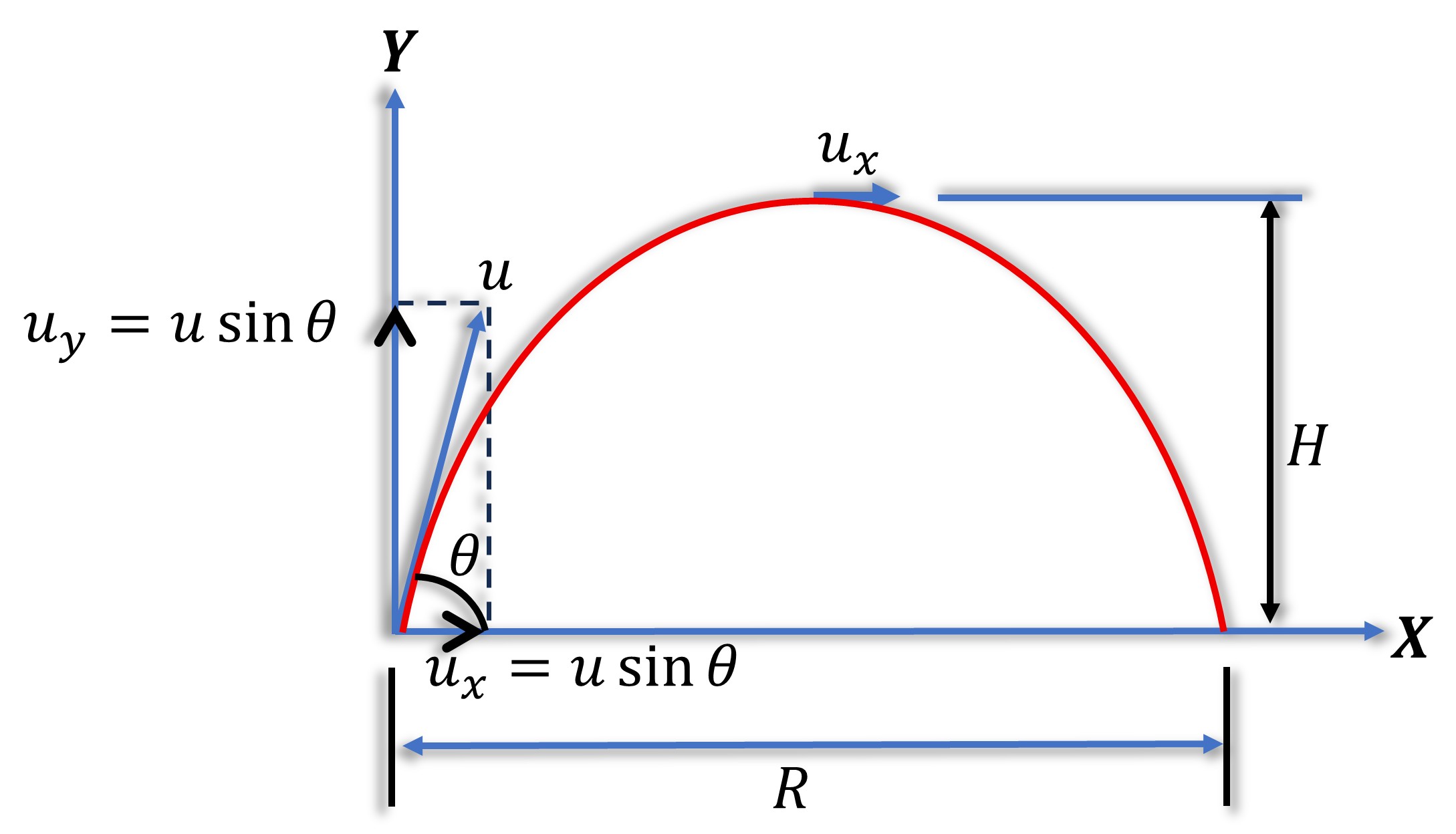Amity University-Noida B.Tech Admissions 2026
Among top 100 Universities Globally in the Times Higher Education (THE) Interdisciplinary Science Rankings 2026
Projectile Motion is considered one the most difficult concept.
98 Questions around this concept.
A boy can throw a stone up to a maximum height of 10m . The maximum horizontal distance that the boy can throw the same stone up to will be :
A water fountain on the ground sprinkles water all around it. If the speed of water coming out of the fountain is v , the total area around the fountain that gets wet is
A shell is fired from a fixed artillery gun with an initial speed $u$ such that it hits the target on the ground at a distance $R$ from it. If $t_1$ and $t_2$ are the values of the time taken by it to hit the target in two possible ways, the product $t_1 t_2$ is:
New: JEE Main 2026 City Intimation Slip Link
JEE Main Sample Papers: Physics | Chemistry | Maths | Top 30 Repeated Questions
JEE Main QP & Mock: Previous 10 Year Questions | Chapter Wise PYQs | Mock test Series
The relation between the time of flight of the projectile and the time to reach the maximum height
is :
Assertion: In the plane-to-plane motion of a projectile, the horizontal component of velocity remains constant.
Reason: In plane-to-plane projectile motion, the horizontal component of acceleration is zero.
A projectile fired with initial velocity at an angle
. If the initial velocity is tripled at the same angle of projection, then the time of ascent will become :
An initial velocity of $(2 \hat{i}+\sqrt{3} \hat{j}) \mathrm{m} / \mathrm{s}$ is given to a projectile, which $\hat{i}$ is along the ground and $\hat{j}$ is along the vertical. The equation of its trajectory is if $g=10 \mathrm{~m} / \mathrm{s}^2$.
A ball whose kinetic energy is $E$, is projected at an angle of $45^\circ$ to the horizontal. The kinetic energy of the ball at the highest point of its flight will be
A particle is projected in horizontal direction from a height. The initial speed is 4m/s. Then the angle made by its velocity with horizontal direction after 1 second is
Direction : In the following question , a statement if Assertion (A) is followed by a statement of reason (R) , Mark the correct choice as
Assertion : when we project a body , the vertical velocity of the particle continuous decreases during its ascending motion
Reason : A constant downward acceleration always present in projectile motion
Projectile Motion- Two dimesional motion under action of uniform force is called is called projectile motion.
E.g- A javelin thrown by an athlete


1. Projectile Projected at an angle $\theta$
- Initial Velocity- u
Horizontal component $=u_x=u \cos \theta$
Vertical component $=u_y=u \sin \theta$
- Final velocity $=\mathrm{V}$
Horizontal component $=V_x=u \cos \theta$
Vertical component $=V_y=u \sin \theta-g . t$
So,
$
V=\sqrt{V_x^2+V_y^2}
$
- Displacement $=\mathrm{S}$
Horizontal component $=S_x=u \cos \theta . t$
Vertical component $=S_y=u \sin \theta \cdot t-\frac{1}{2} \cdot g \cdot t^2$
and,
$
S=\sqrt{S_x^2+S_y^2}
$
- Acceleration $=\mathrm{a}$
Horizontal component $=0$
Vertical component $=-\mathrm{g}$
So, $a=-g$
Parameters in Projectile motion -
Maximum Height -
Maximum vertical distance attained by a projectile during its journey.
- Formula-
$
H=\frac{U^2 \sin ^2 \theta}{2 g}
$
- When the velocity of projectile increases n time then Maximum height is increased by a factor of $n^2$
- Special Case-
If U is doubled, H becomes four times provided $\theta \& \mathrm{~g}$ are constant.
2) Time of Flight
- Time for which projectile remains in the air above the horizontal plane.
- Formula-
1. $T=\frac{2 u \sin \theta}{g}$
2. Time of ascent $=$
$
t_a=\frac{T}{2}
$
3. Time of descent =
$
t_d=\frac{T}{2}
$
When the velocity of projectile increased n time then Time of ascent becomes n times
When the velocity of projectile increased n time then Time of descent becomes n times
When the velocity of the projectile increased n time then the time of flight becomes n times.
Horizontal Range
Horizontal distance travelled by projectile from the point of the projectile to the point on the ground where its hits.
Formula-
$
R=\frac{u^2 \sin 2 \theta}{g}
$
- Special case of horizontal range
1. For max horizontal range.
$
\begin{aligned}
\theta & =45^0 \\
R_{\max } & =\frac{u^2 \sin 2(45)}{g}=\frac{u^2 \times 1}{g}=\frac{u^2}{g}
\end{aligned}
$
2. Range remains the same whether the projectile is thrown at an angle $\theta$ with the horizontal or at an angle $\theta$ with vertical ( $90-\theta$ ) with horizontal
3. When the velocity of projectile increases $n$ time then the horizontal range is increased by a factor of $n^2$
4. When the horizontal range is $n$ times the maximum height then
$
\tan \theta=\frac{4}{n}
$

"Stay in the loop. Receive exam news, study resources, and expert advice!"
